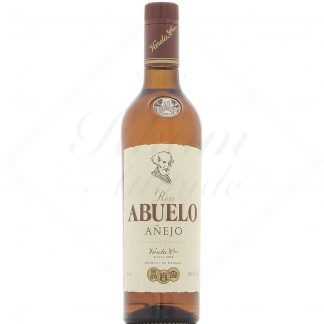Abuelo

The history of Abuelo rum
The origins of Abuelo rum date back to 1908, in the town of Pesé, Panama. It was then that José Varela Blanco, a young Spanish immigrant, founded Ingenio San Isidro, the first sugar mill in the young republic of Panama.
In 1936, his eldest sons José Manuel, Plinio and Julio joined the man now known as Don José. It was here that the distillation of cane alcohol began, with Seco Herrerano, a rum made from pure cane juice that remains the local market leader to this day.
A more modern facility was built not far from the original dwelling in 1976. This is the Don José distillery, which today produces Abuelo rums and many other spirits. It is located on the Hacienda San Isidro, managed by Varela Hermanos SA. It is virtually the only distillery in the country, accounting for 90% of national production and employing over 200 people.
Lhe production of Abuelo rum
The distillery has its own cane fields, covering 1600 hectares. It extracts cane honey (first-cooking molasses), which it ferments for 36 to 48 hours. The quantities processed by Don José are considerable, with 400,000 liters of molasses mash fermented every day.
Distillation takes place on a 4-column installation, from which 60 to 80,000 liters of rum are distilled every day. For Abuelo rum, only old bourbon barrels are used, most of them sourced from Jack Daniel's. Aging is carried out using the solera method, a complex blend of young and very old rums.
To achieve this, Abuelo has 19 ageing cellars, with a total capacity of over 100,000 barrels.
The Abuelo range is made up exclusively of aged rums. The first, Añejo, is a young rum designed primarily for cocktails. Then there's the Abuelo 7 Años, the 12 Años (which also exists in a Two Oaks version), and the Centuria blend. The Finish Collection XV range appeared a little later, offering various finishes in old Port, Sherry or Cognac casks. Read less















